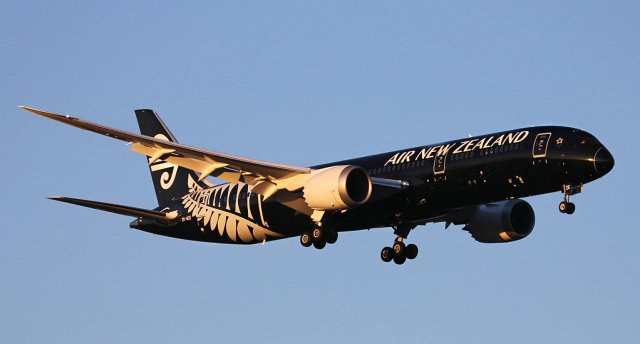 Authorities in New Zealand have started investigations into how a drone came close to hitting an Air New Zealand airliner above Christchurch city, the media reported on Saturday.
Authorities in New Zealand have started investigations into how a drone came close to hitting an Air New Zealand airliner above Christchurch city, the media reported on Saturday.
CAA director Graeme Harris said; “We appreciate that NZALPA has a view, but it totally ignores the activity that is taking place in RPAS education and regulation”. The RPAS should not have been anywhere near the Jet. We believe our members know the Civil Aviation Rules and abide by them so it makes sense to formalise this as a code of conduct ” said Shaun Mitchell, Chairman of UAVNZ, the national industry organisation for Unmanned Aircraft.
Transport minister Simon Bridges said the incident was being treated seriously. “While this reporting is concerning, I am satisfied that it’s being investigated fully, with urgency, and is being treated very seriously”, Mr Bridges said. The CAA is part of the ICAO RPAS committee and is sharing information about the safe use and application of RPAS within the aviation industry and wider community.
To that end the government recently introduced new Civil Aviation Rules to enable sensible use of the technology while protecting third parties on the ground and in the air.
David Morgan, captain of the plane, said the airline would support any moves to ensure drone operations did not compromise the integrity of airline operations.
An air safety investigation is underway after a drone was seen flying near an Air New Zealand aircraft above Christchurch on Friday night. Mr Harris said it had been illegal to fly drones or model aircraft above 400 feet since 1997; and the law was quite blatantly broken high above Kaiapoi on Friday evening. “From the limited facts known at this stage the RPAS involved in this incident was very clearly operating unlawfully”.
Under CAA rules, RPAS must not fly above 120 metres unless certain conditions are met, the craft must weigh less than 25 kilograms and it can only be flown during daylight hours. RPAS operators must also be able to see their craft at all times and are restricted from flying in controlled airspace without the approval of air traffic control.
Source: NYSE Post

Has anyone ever noticed that “Near Miss” is an oxymoron.
Take the headlines from the 1960’s and replace the word “UFO” for “Drone”. Airline pilots are encouraged to report drone sightings, and many birds, toy balloons and clouds have been reported as a U̶F̶O̶ Drone.
Simply seeing a drone is not a collision threat. Many of the sightings in the FAA database (and it’s probably similar all over the world) are unverified. Only one crew member claims to have possibly seen a drone, so the report is counted even when no evasive action was taken. Unverified possible sighting and no evasive action = terror in the sky?
There is absolutely no factual evidence to support the fear and ignorance around small personal drones. There have been hundreds of thousands of hours of flight of small drones, yet there is not one verifiable report of a drone crash that resulted in a serious injury as defined by the ICAO to someone not connected to the flight. Not one. (A Band-Aid is not a serious injury- See US CFR 49 §830.2). There is also not one verifiable report of a collision between a small drone and a manned aircraft. Not one.
The FAA executive in charge of integrating unmanned aerial systems (UAS) into the National Airspace System (NAS) says that if and when a small UAS (sUAS) and a manned aircraft collide, the manned aircraft isn’t likely to suffer serious damage. Jim Williams was speaking to a nervous audience of helicopter operators at HAI Heli-Expo in Orlando (March 2015) and said that while there’s never been a reported contact between an sUAS and a civilian aircraft, the military has some experience in that regard. In all cases the aircraft was virtually unscathed while the UAS was “smashed to pieces.”
Small UAVs do not pose any significant risk to the National Airspace System. “Dangerous” and “invasion of privacy” concerns are ridiculous, driven by paranoia borne of ignorance.